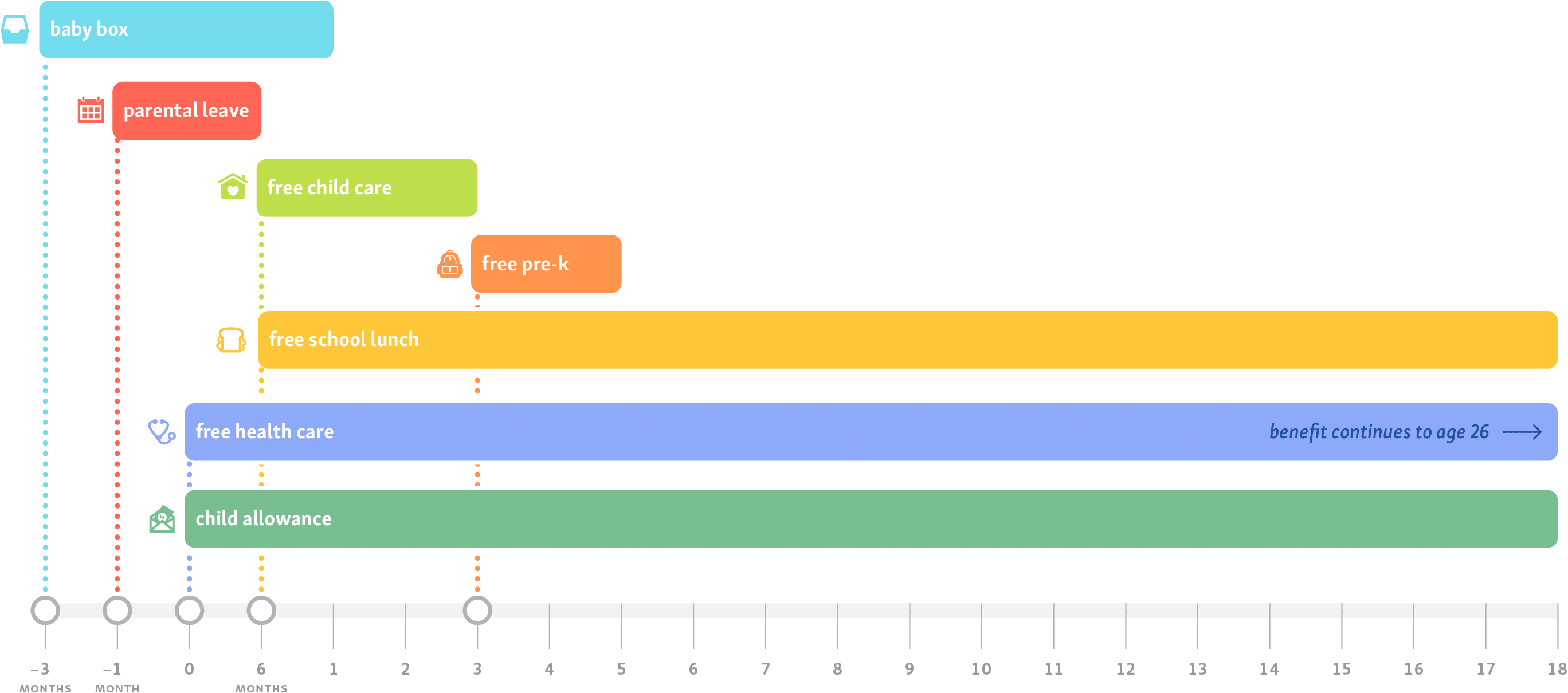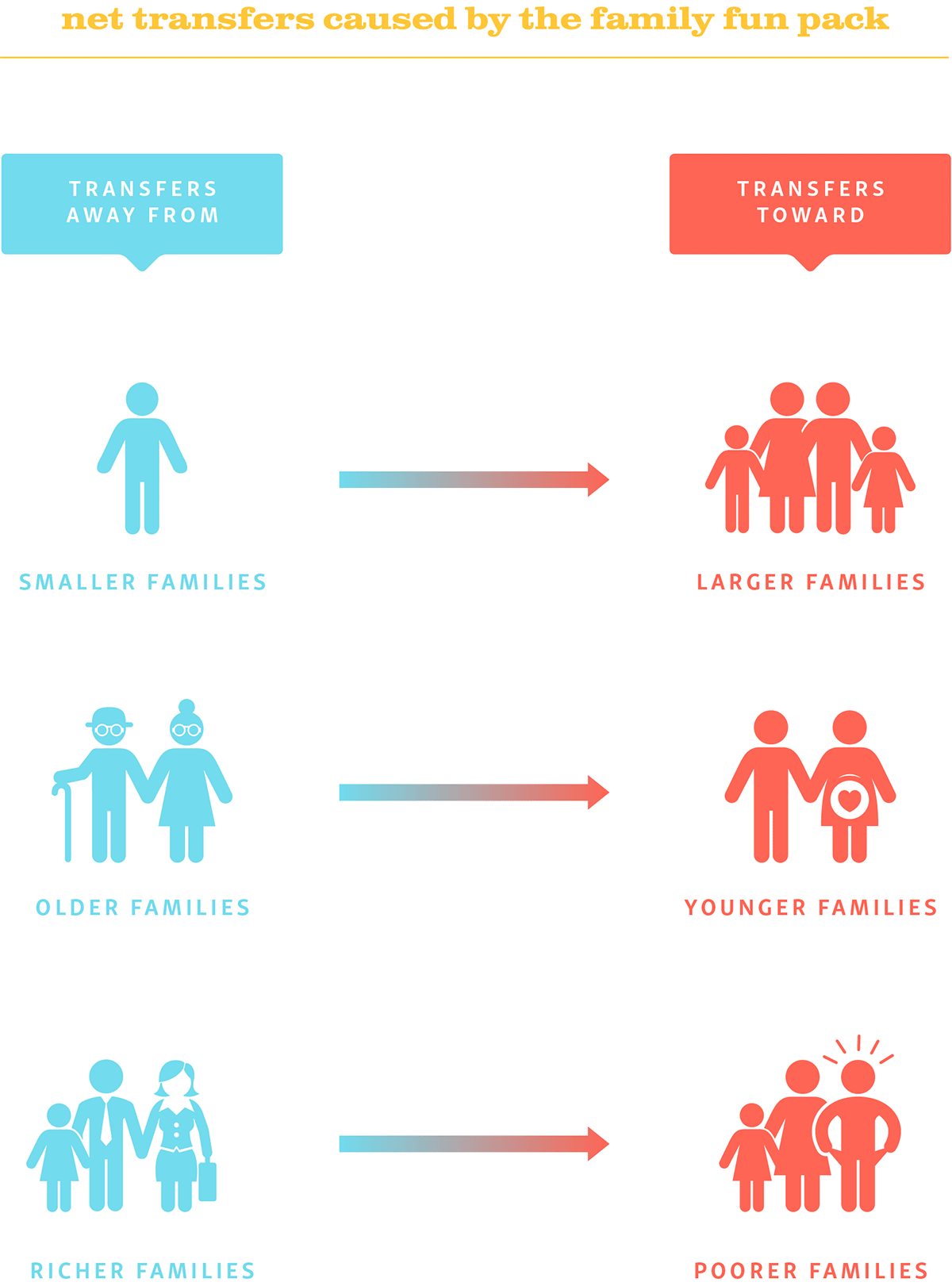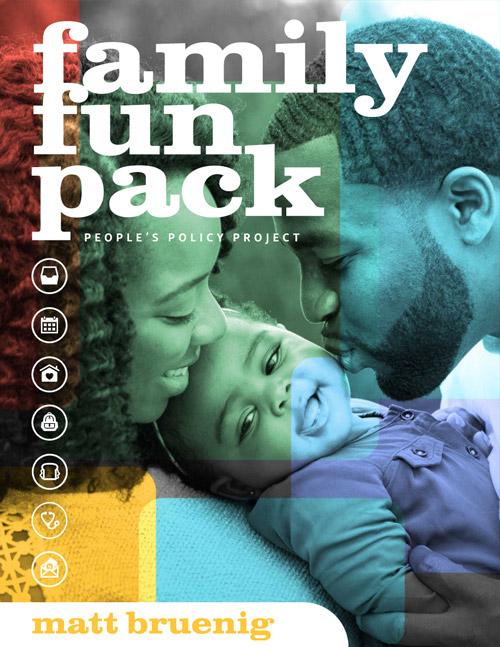People’s Policy Project has released its eighth major paper: “Family Fun Pack.” Matt Bruenig authored the paper. Jon White designed it.
The paper argues that the United States should create a comprehensive set of universal family welfare benefits with the goal of making parenting easy and affordable for everyone. The seven benefits in the paper are:
-
-
Baby box. Three months before the birth of a child, each family will receive a box that contains essential items like clothes and bottles with the box itself doubling as a bassinet.
-
-
-
Parental Leave. Families will receive 36 weeks of paid leave for the birth of a child. In single-parent families, the sole parent is entitled to all 36 weeks. In two-parent families, each parent is entitled to 18 weeks but may transfer up to 14 weeks to the other parent. The paid leave benefit will be set equal to 100 percent of earnings up to the minimum wage and 66 percent of earnings beyond the minimum wage. All recipients will be entitled to benefits equal to at least the minimum wage but no more than the national average wage.
-
-
-
Free child care. After the parental leave period, children will be entitled to a spot in a free public child care center. Parents who wish to care for their children at home can opt out and receive a home child care allowance equal to the per-child wages of child care workers. For example, if public child care workers are tasked with caring for four kids at a time, then the home child care allowance would be equal to one-fourth of the pay of child care workers.
-
-
-
Free pre-k. From age 3 to 5, children will be entitled to a spot in a free pre-k center.
-
-
-
Free school lunch. Public child care centers, public pre-k centers, and public k-12 will all provide free school lunches.
-
-
-
Free health care. Everyone below the age of 26 will be entitled to free health care through the Medicare system.
-
-
Child allowance. Parents will receive $300 per month for every child they are caring for under the age of 18. This benefit will replace the child tax credit, child and dependent care tax credit, dependent care flexible savings accounts, 529 accounts as used for elementary or secondary school, and head of household filing status. It will also mostly replace the earned income tax credit.
The parental leave, child care, and pre-k programs fully resolve the question of how to care for children below school age. The baby box, free school lunch, and free health care provide in-kind benefits that address a few universal childhood needs. And then the child allowance provides a modest cash transfer to offset some of the costs that remain.
Below is a handy timeline displaying all of these benefits.

Market Income Is The Problem
In addition to providing a family benefits platform, the paper lays out a theory about why family benefits are needed that is both clearly correct and conspicuously absent in US discourse.
The theory is this: Capitalist economies only provide income to those who work and those who own. Since children neither work nor own, they find themselves locked out of the primary mechanisms of resource distribution in a capitalist society. To the extent that children receive resources, they do so indirectly through a family unit. But relying solely on that unit to funnel incomes to children runs into two major problems that generate high levels of inequality, poverty, and financial stress.
The first problem, which I call the mere addition problem, is that adding children to a family increases the amount of resources that family needs but does not increase the amount of resources available to them. Like the elderly or the disabled, children thus create enormous financial strain that only the welfare state or other non-market distributive mechanisms can offset.
The second problem, which I call the lifecycle income problem, is that people have children in their 20s and 30s, which is when they have the lowest level of earnings and the lowest level of savings in their life. Only a welfare state is capable of smoothing out the mismatch between the timing of children and the timing of income.

The family fun pack works because it net transfers income away from small families and towards large families; away from old families and towards young families; and away from rich families and towards poor families.

The Best Welfare Strategy for Democrats
In addition to this policy program being really good on the merits, it is also really good politics for the Democrats given who votes for them and who they want to vote for them.
The family fun pack provides universal social democratic benefits that will appeal to the left flank of the party because it discards the tired Democratic welfare agenda of means-tested tax credits. But at the same time, the program heavily disproportionately benefits poor and working class people, women, young adults, and people of color. This is the idealized Democratic coalition in a nutshell.
By concentrating benefits on very young children and providing universal pre-k, the program should satisfy the mostly misguided obsessions with human capital that dominate elite Democratic policymaking circles.
The program also benefits relatively affluent young professionals, a bizarre member of the Democratic coalition that nonetheless buckles under the costs of child care and preschool.
Lastly, the program even incorporates the Medicare for All push by including Medicare for everyone under the age of 26. Ideally we would switch the entire country over to national health insurance, but in the event that more incremental steps became politically necessary, adding all the children and young adults to the Medicare rolls would be a very cheap and effective step forward.
The family fun pack is a no-brainer on every level. Politicians looking to make waves in the 2020 elections would be wise to consider adopting it as their welfare platform.

